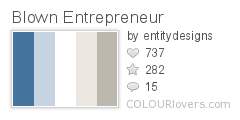It all started with a question on TeX.SX: Namely, is there any quick way to draw diagrams from a list of items, similar to the ‘Smart Art’ feature in PowerPoint 2010?
It wasn’t long before the package smartdiagram was born as a response, using TikZ to do the actual drawings. The basic syntax is:
\usepackage{smartdiagram}
\smartdiagram[diagram type]{list of comma-separated items} |
\usepackage{smartdiagram}
\smartdiagram[diagram type]{list of comma-separated items}
Here are some examples (based on material from here):
\smartdiagram[circular diagram]{Assess,Plan,Implement,Renew} |
\smartdiagram[circular diagram]{Assess,Plan,Implement,Renew}
\smartdiagram[flow diagram]{Assess,Plan,Implement,Renew} |
\smartdiagram[flow diagram]{Assess,Plan,Implement,Renew}
\smartdiagram[buggle diagram]{Planning Cycle,Assess,Plan,Implement,Renew} |
\smartdiagram[buggle diagram]{Planning Cycle,Assess,Plan,Implement,Renew}
If you happen to be preparing a Beamer presentation, replacing the \smartdiagram command with \smartdiagramanimated will result in an automatically ‘animated’ diagram, with each item in the list appearing one at a time as you advance through the slides:
See the manual for other digram types and customisation options (colours, shapes, sizes, etc).











